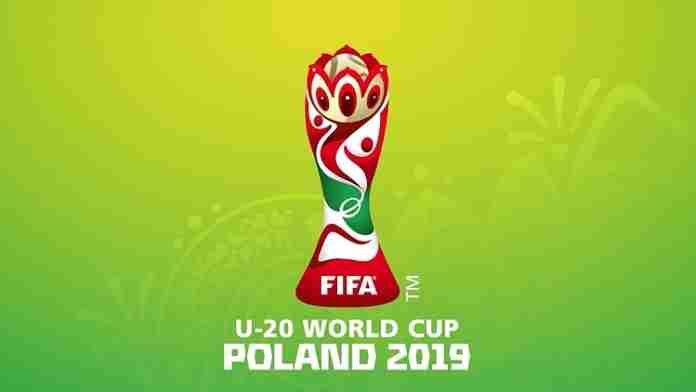The first edition of the FINA Champions Swim Series has now been completed, with three meets and more than $2 million in prize money distributed to the competing athletes.
Was it worthwhile, or a waste of time (and money)?
It seems to me they were both, but that there is a major flaw in the concept that needs to be addressed and can be, with some creative thinking. Let start with FINA’s announced goals for the event:
● Staging the greatest Swimming events ever seen.
Grade: F. This was not the Olympic Games and not the World Championships, but that was clear from the beginning. Why was this even listed?
● Have the star athletes competing against each other.
Grade: A-. A lot of top swimmers competed and a lot did not, for various reasons. But an event which pits Lilly King against Russia’s Yuliya Efimova in all three Breaststroke events for the first time since 2017 is a winner.
● To generate international TV, digital & media interest.
Grade: Incomplete. More information will come out about this later and while there was interest in the swimming community, the series made little or no impact on sports coverage in the U.S., or – judging from online coverage – in most other places. Much more attention was paid to the annual Giro d’Italia cycling extravaganza, going on at the same time.
● To give high-level swimmers increased attention and appearance.
Grade: C+. Increased “appearance” on the sports scene, yes. Increased attention, not so much.
● To create a world-class platform for Swimming.
Grade: A-. There is potential here and congratulations to FINA for putting the program together. Remember, this whole concept was only announced last December and to see it through in less than six months is a credit to FINA’s event management expertise (and deep pocket).
Overall, let’s be charitable and give the 2019 series an overall grade of B. It was pretty good, but it needs work. In specific:
The Good
● The meets were well produced, generally ran on time and the big videoboards for introductions, lighting effects and show-biz elements were much appreciated by the swimmers, who aren’t used to such things. It’s not clear that the spectators were all that interested.
● The television production was pretty good and had plenty of replays and underwater shots, which are more and more crucial to explaining why races turn out the way they do. The live timing site from Omega was excellent and fast for those who were actually paying close attention, although more could be done with this.
● The meets ran quickly and time-wasters such as lengthy awards ceremonies were kept to a minimum. Some of the between-races programming was good and some was not (such as U.S. swimmer Justin Ress being asked about his prep for the World Championships and Ress replying that he didn’t make the team).
● The contentious nature of the FINA-ISL relationship (or lack thereof) probably cost the first-year Champions Series some swimmers, but many of the big stars were there, including overall star Sarah Sjostrom (SWE), truckloads of Olympic and World Championships medalists and even two plaintiffs in suits against FINA (and in league with ISL): Katinka Hosszu (HUN) and Michael Andrew of the U.S. Having Sjostrom in all three meets really helped to hold the Series narrative together.
● Although the arenas were dark and lighting focused only on the pool, it was possible to see that while the three venues weren’t sold out, the meets were fairly well attended (and noisy). The three sites had seating capacities of 4,584 in Guangzhou, about 5,000 in Budapest and 4,700 in Indianapolis. By professional sports standards, these are tiny, but for swimming’s purpose, pretty good.
● FINA did itself a lot of good with its primary stakeholders: swimmers. It spent some money and appeared to work with the swimmers rather than against them during the process. There was a much-appreciated meeting on Saturday (1 June) in Indianapolis to discuss how to improve swimming’s impact as a spectator sport. This is an excellent development and can lead to considerable improvements in the sport and should be continued at the World Championships in July in Korea.
The Not-so-Good
● There were swimmers who were missing. Some didn’t compete because of injury or training situations; others don’t want to appear to be supporting FINA. That’s a first-year problem and will go away over time.
● American fans who watched the Champions Swim Series on NBCSN or NBC’s Olympic Channel heard over and over again that the swimmers were all in heavy training – especially the Americans – during the series and that what was important was the World Championships in 2019 and the Olympic Games in 2020 … and not the Champions Swim Series.
This is absolutely true, but at the same time demeans the Champions Swim Series and makes it sound like a high-paying exhibition. And in truth, that’s what it was. Nothing was at stake other than money; more on this below.
At one point, NBC’s Missy Franklin – the five-time Olympic gold medalist from 2012 and 2016, now retired at age 24 – said of U.S. swimmer Townley Haas as he got ready for the men’s 100 m Freestyle, “This meet is mainly for training.”
(Franklin, by the way, has real potential as an analyst if she will stop giggling and take Justin Knapp’s lead to talk about what the training and race plans are for the swimmers. She really knows and can provide some real insight that viewers will appreciate.)
● The big problem is that the Champions Swim Series was a showcase and not a competition. The idea to match up the reigning Olympic and World Champions and the 2019 world leader sounds great on paper, but in its inaugural edition, did not make for compelling viewing with the great exception of the King-Efimova races in Indy.
The IAAF has the same problem in track & field, but constructed the Diamond League 10 years ago to create a seasonal narrative that is finally being re-shaped into something that might really work.
During the promotion-of-the-sport meeting on the 1st, Belgian sprinter Pieter Timmers suggested that “February is a good month to do this, we all agree. The meets should be close to each other because we don’t want to travel too much in an Olympic trial [year]. Maybe you can do 2020 in Europe, 2021 in Asia, 2022 in America for example.”
Dutch star Ranomi Kromowidjojo added “It is important to have the meets in a very short period of time to avoid missing training so much. It also helps preventing jet lag. If you could keep it into one travel that would be great.”
That’s fine for the swimmers, but not for spectators. What are they supposed to take out of these comments: that training is more important to the swimmers than competing? That may be true, but it gives no incentive – no reason – for fans to be interested in the meets, in person or on television.
This is the flip side of “the voice of the athlete”: it’s not the voice of the fan, or the television networks, who end up paying for all of this. To have the Champions Swim Series – and the FINA World Cup series, held in the fall – act as drawing cards for the sport, there has to be a reason for them to exist and some important reason why people should watch.
The Champions Swim Series doesn’t have this yet and FINA can be forgiven, especially with the short time frame available to put the meets on in 2019. But if this concept is to actually help grow interest in the sport, it has to mean something, and be something different than the World Championships and the Olympic Games.
Otherwise, it’s just a break for training, and a road to nowhere, instead of a way to take swimming to a new level of public interest and enthusiasm. Let’s hope it’s an on-ramp to the future.
Rich Perelman
Editor






















